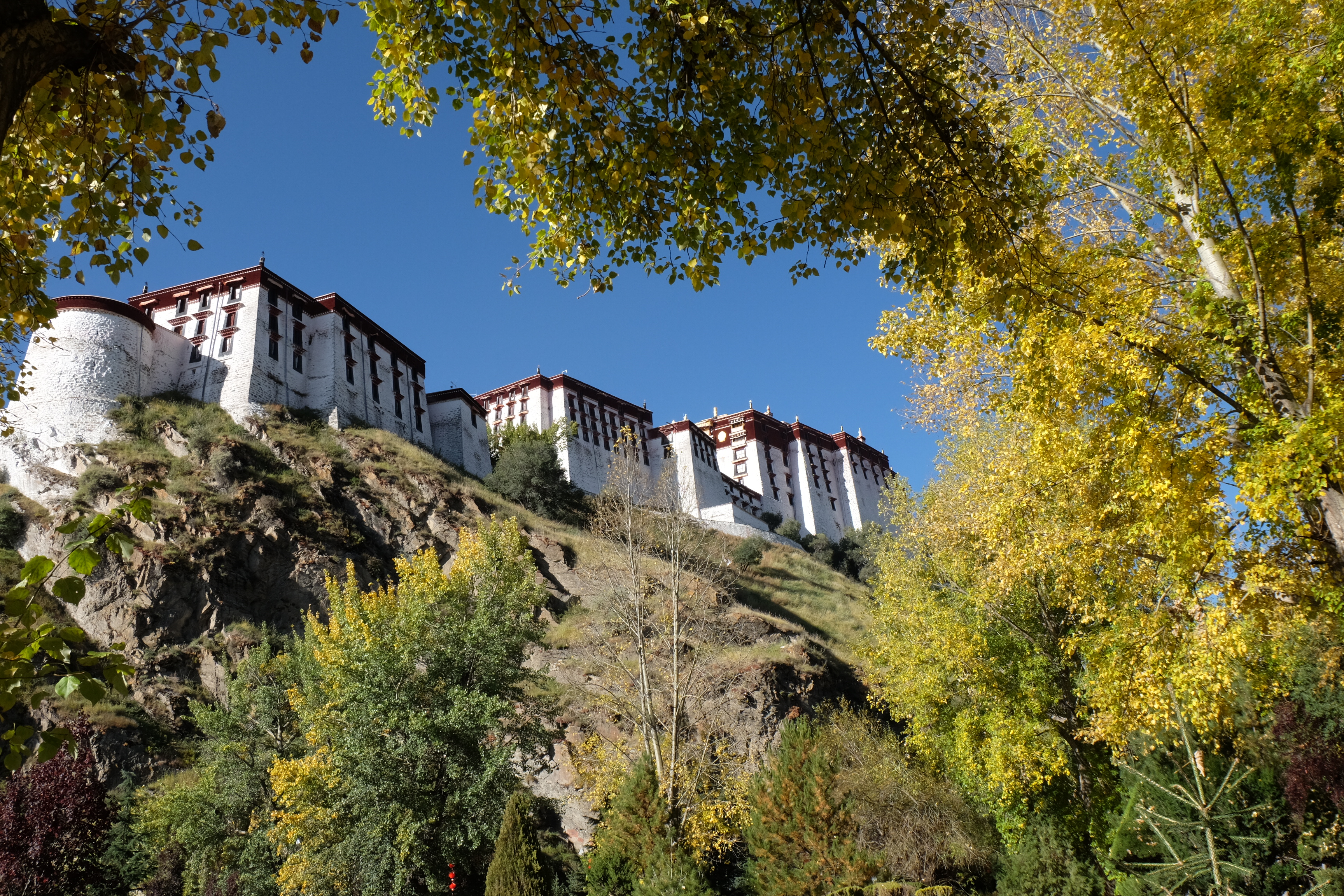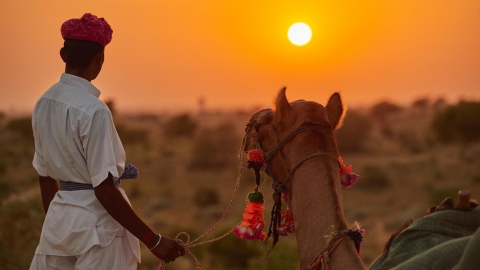In mid-October two years ago, the white snow-capped peaks of the majestic Himalayas appeared against the blue sky, the five-colored lung-ta flags fluttered in the vast desert, the rows of trees turned golden yellow like candles on the roadside, the gentle breezes blew a few leaves into the deep blue space, the rivers were quiet, the water was blue and the rows of charming trees reflected themselves... In the midst of that immense autumn scene, I was moved and bewildered, not thinking that I would have such a beautiful and dreamy Tibetan autumn.
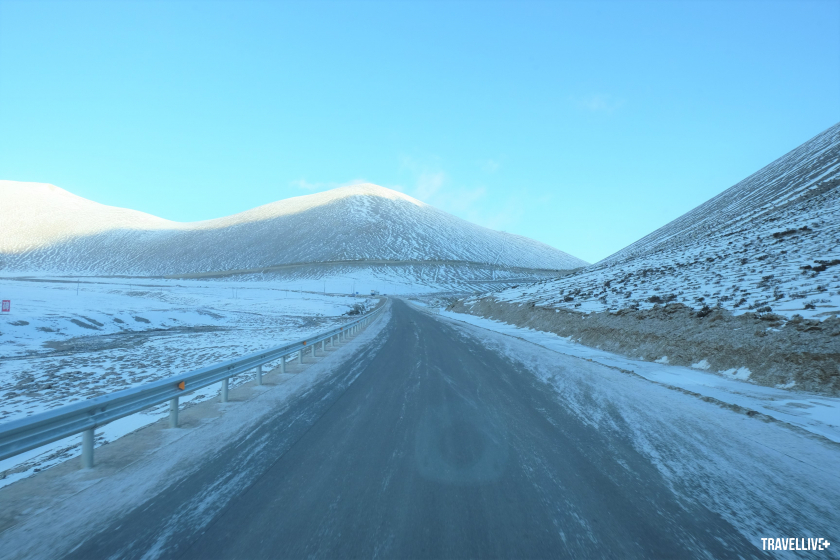
The road is full of snowy mountains.
Golden Route from Gonggar Airport to Lhasa
Landing at Gonggar airport on an autumn afternoon, we could clearly feel the cold air of the Qinghai-Tibet Plateau. Amidst the blue sky and white clouds at an altitude of nearly 4,000 m above sea level, the yellow-leafed roads appeared as if they were spread out like a carpet to welcome us from the airport to the capital Lhasa. The breathtakingly beautiful scenery made it impossible for us to resist. Sitting in the car, my heart was pounding, hoping to get out of the car and embrace the mysterious Tibetan autumn sky that so many people wish to set foot in at least once. We should have slowed down to fully enjoy those moments, but as mortals, setting foot in this paradise on earth for the first time, how could we be calm in front of such a dreamy scene? We were worried about the following days, not knowing if we would have another chance to see such a magical scene. Luckily, the driver understood and was very accommodating, often signaling us when the car was about to pass beautiful roads, and occasionally stopping the car so the whole group could get out and take pictures.
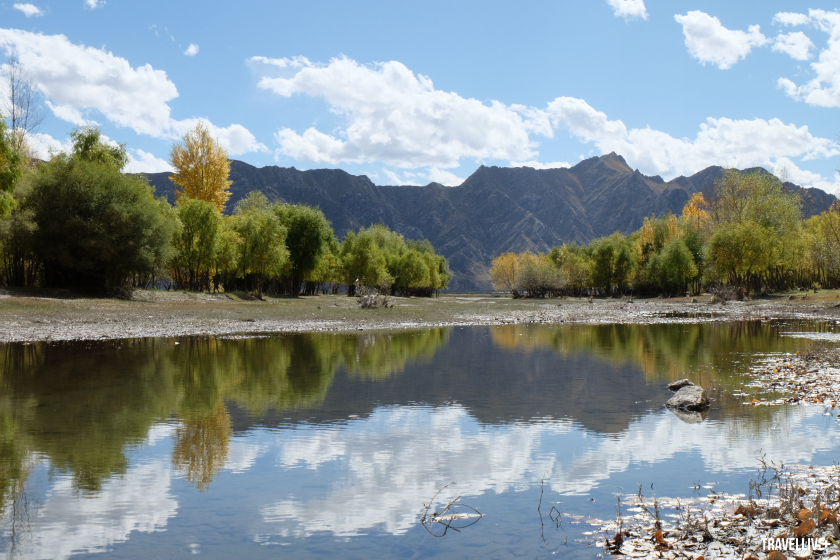

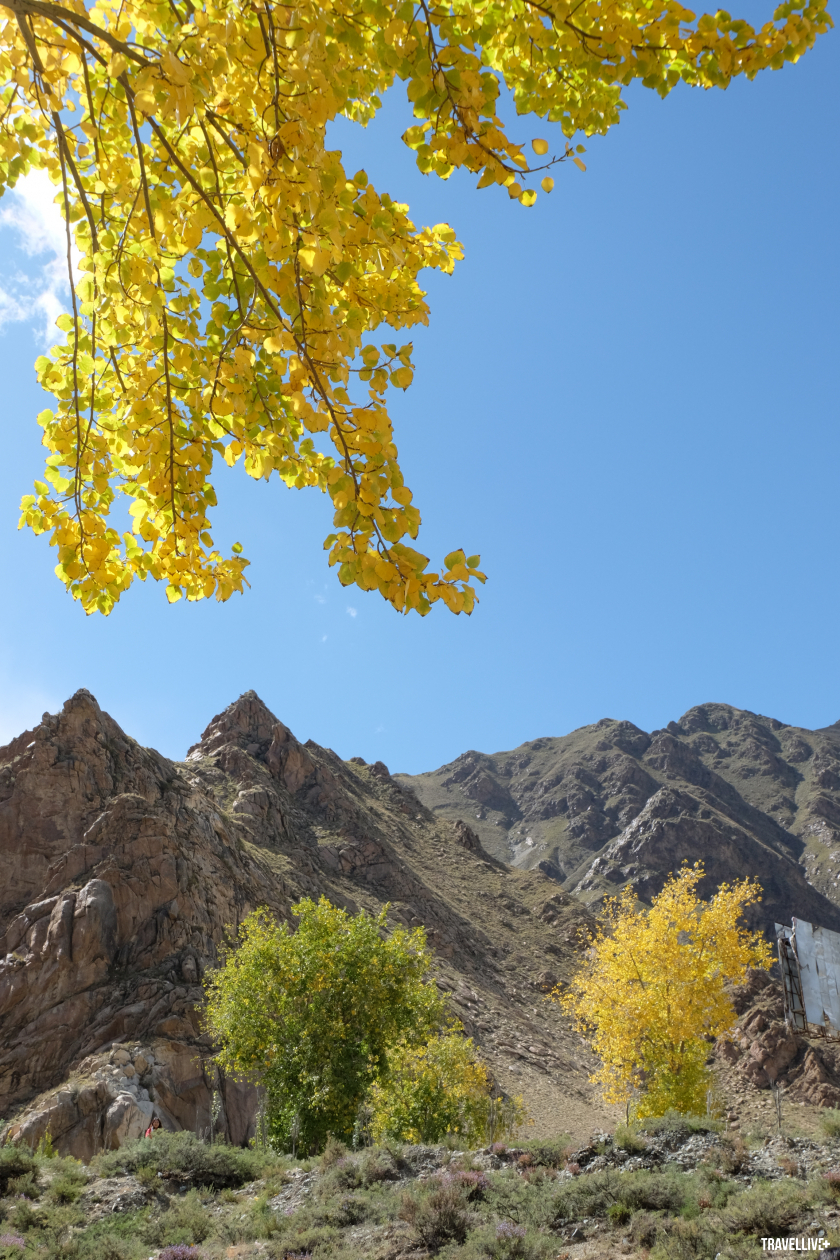
On the way from Gonggar airport to downtown Lhasa
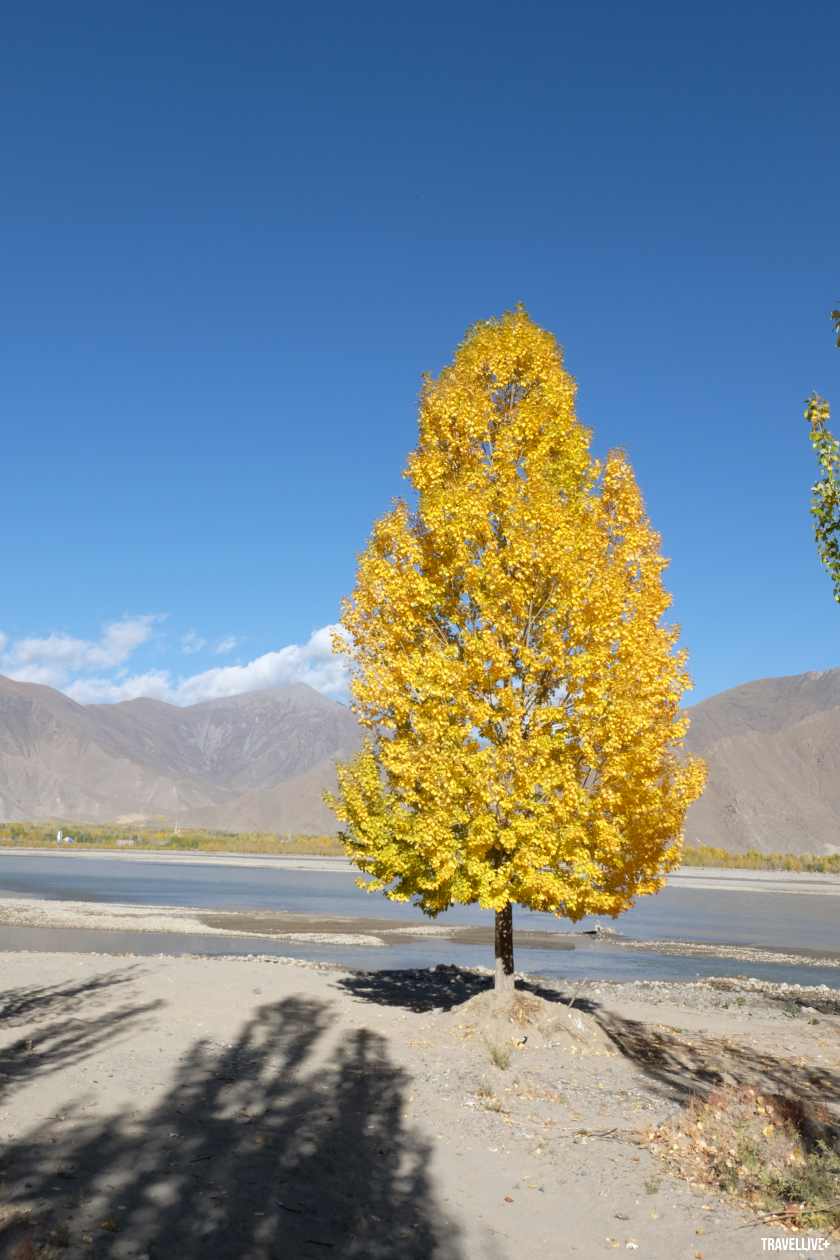
Tibetan Tree - a tree in Tibet
Autumn colors fill the capital Lhasa
During the first days of arriving in Tibet, we spent a lot of time resting and just sightseeing around Lhasa city to let our bodies gradually adapt to the altitude. Kunkun, the Tibetan guide, told us to walk slowly, breathe deeply, drink lots of water, and avoid overexertion because in such a high altitude, the oxygen level is thin, and it is easy to get altitude sickness. Thanks to that, every moment when visiting Potala Palace, Jokhang Temple, Ramoche Temple and Barkhor Street, we leisurely walked and clearly felt the autumn breath of Lhasa. From Potala Palace, we could see the whole city. It seemed that Lhasa had changed a lot compared to before, with many more spacious and splendid high-rise buildings, unlike the wild "Lama Land" as I had read in some books. But anyway, looking down from Potala, Lhasa was still small, peaceful and charming in the autumn colors.
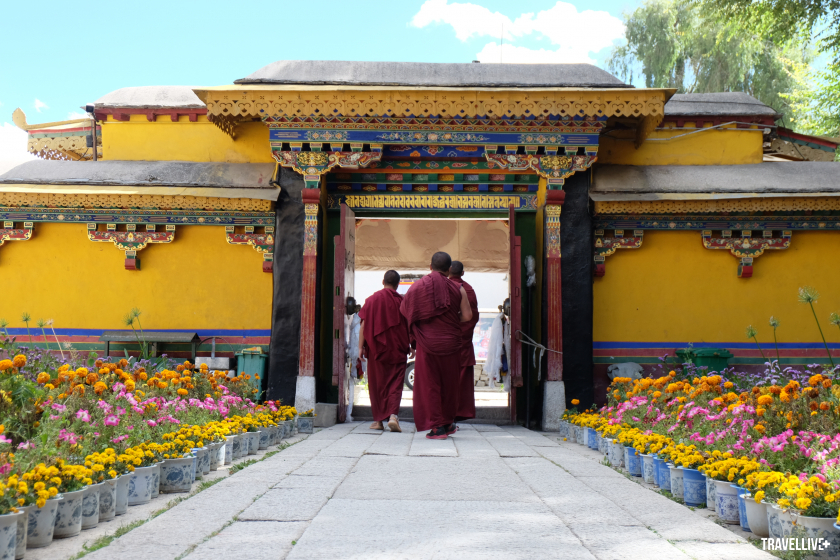
Norbulingka Palace (Summer Palace of the Dalai Lamas)
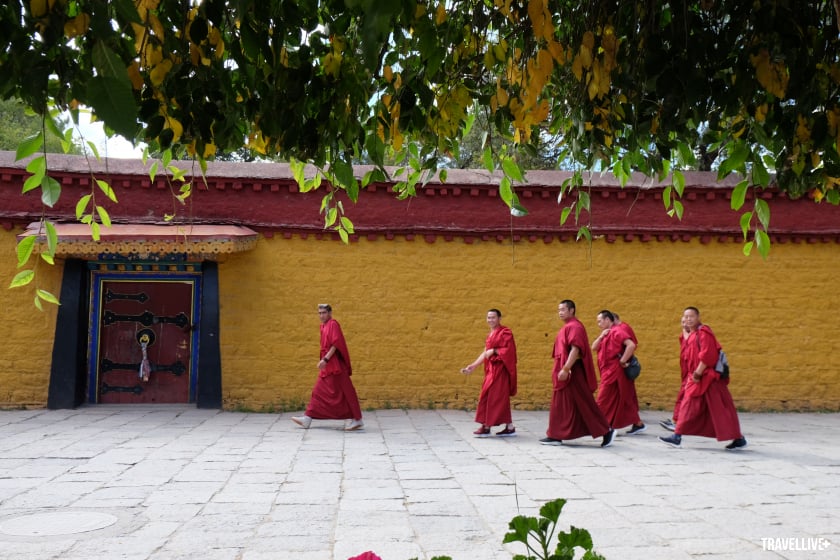
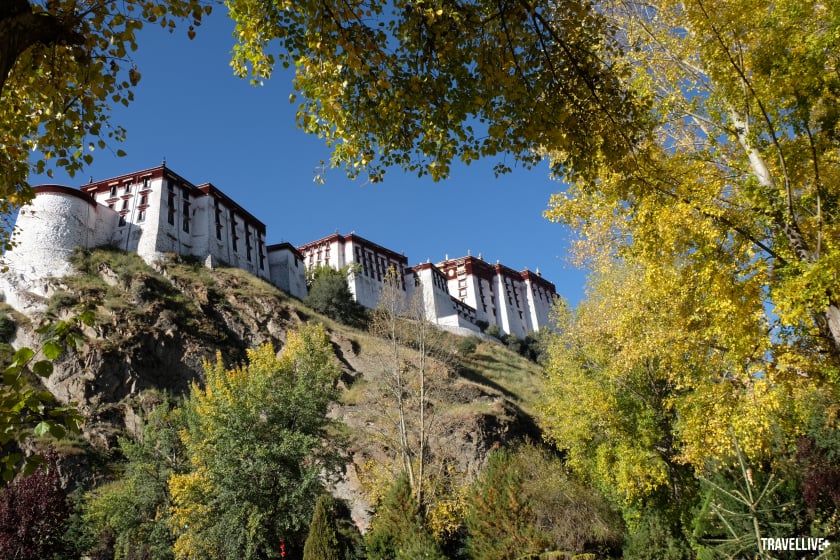
Potala Palace

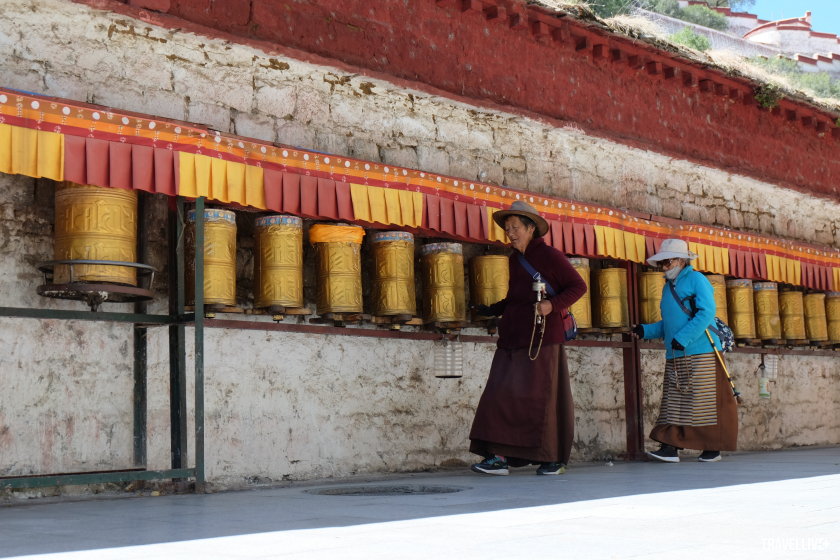
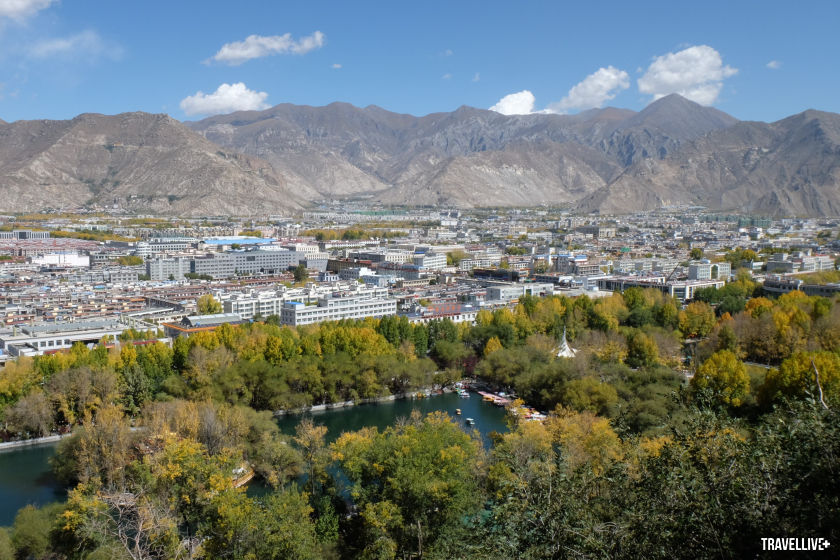
Panoramic view of Lhasa capital from Potala
The Road to Everest Base Camp
While the autumn air was still bustling in Lhasa, we had to depart for the next destination of the journey: the Everest Base Camp at Rongbuk Monastery. From Lhasa to Rongbuk is quite far, about 800 km of mountain passes and vast deserts, we had to divide the journey into two stages, taking two days to reach the place to see the roof of the world. We thought that such a long journey would be very tiring, but in the end, we were extremely excited when Tibet FIT's 24-seat vehicle took the group up the Yarlung River, through the wild countryside of Gyantse and Shigatse.
Along the longest river in the Tibet Autonomous Region, we were once again amazed by the golden leaves reflecting on the water, breathtakingly beautiful. At each stop, the guide only gave us 10 minutes to visit and take pictures so we could get on the road in time for the planned itinerary, but each time we lingered a few more minutes. If the guide hadn’t urged us to get back on the bus, we thought we could have sat there forever.
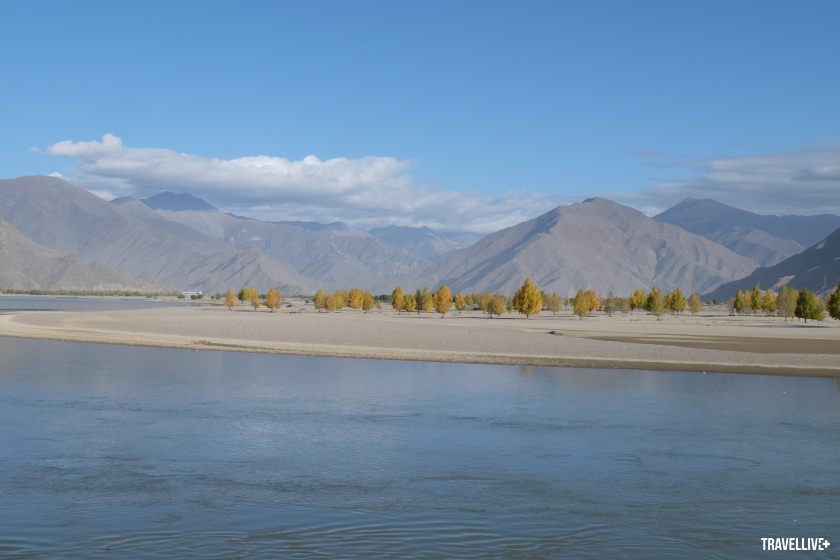
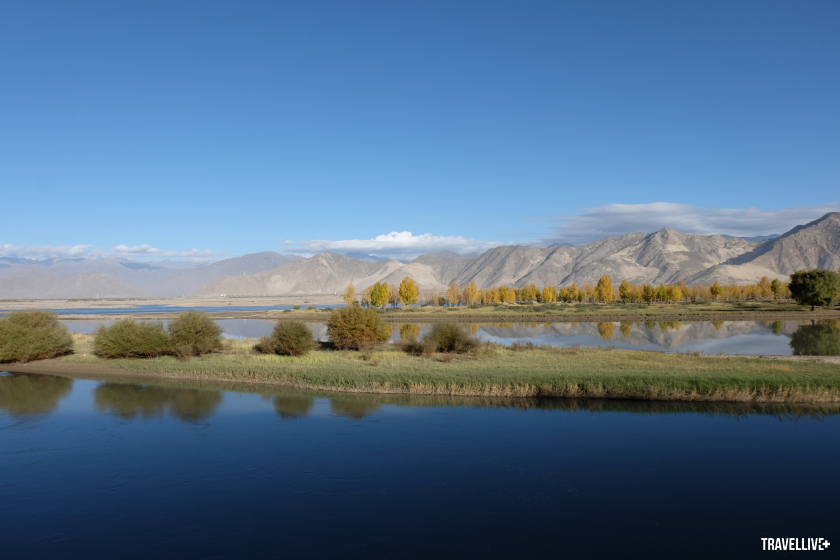
The trees reflect on the Yarlung River
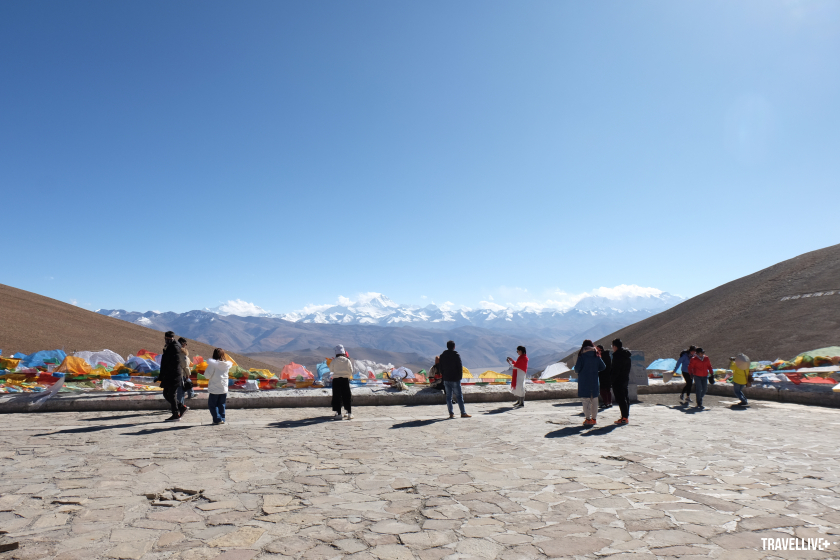
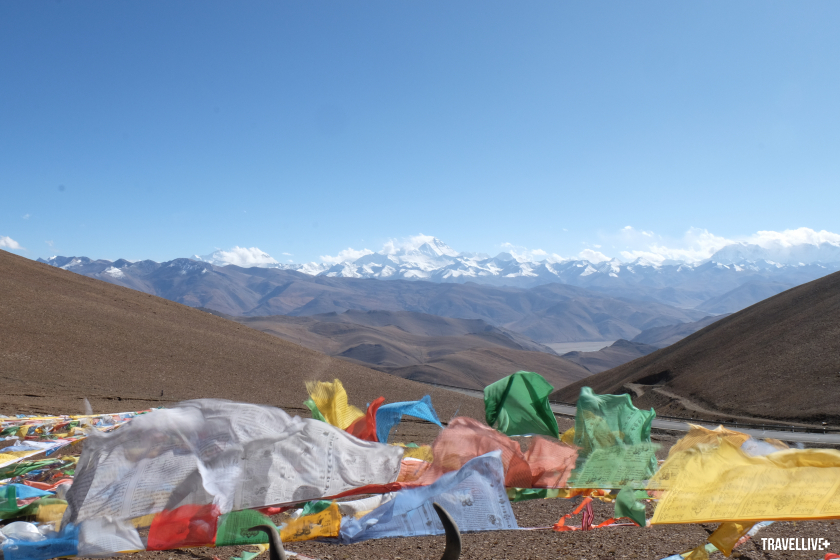
The Himalayas with the majestic Mount Everest
“Candlelit Trees” on the way to the holy lake Namtso
After viewing the world's highest mountain from Everest Base Camp at 5,150 m and spending a memorable night in Rongbuk, we had to leave early because the living conditions here were quite harsh, many of us in the group lost sleep due to anxiety and altitude sickness.
Saying goodbye to Everest, we returned to Shigatse, then stayed another night in Damxung town before going to the highest saltwater lake in the world, Namtso (at an altitude of 4,718 m). Namtso is also known as an extremely beautiful and sacred lake, almost any tourist coming to Tibet for the first time will visit.
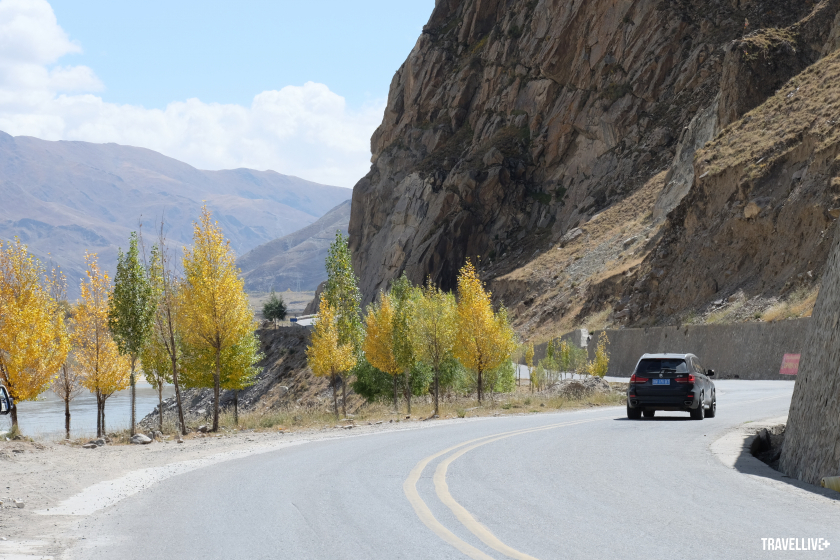

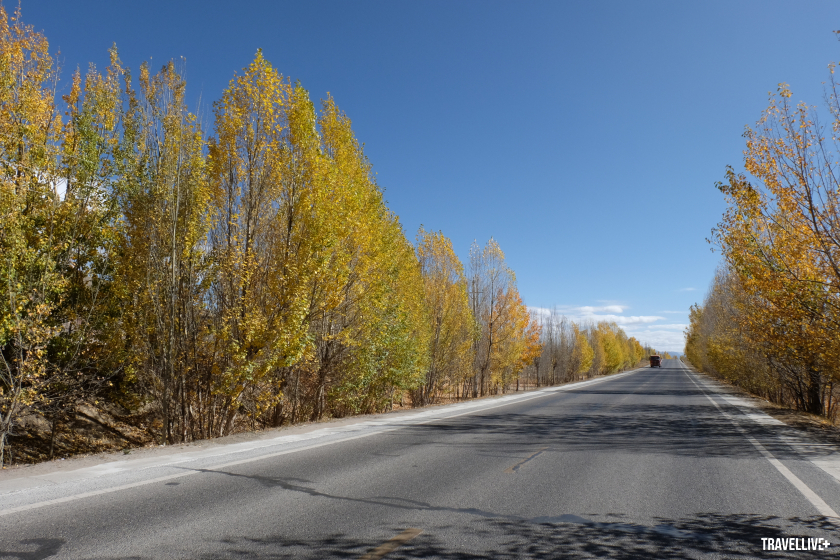
The roads from Shigatse to Namtso
The road from Shigatse to Namtso took us through many pleasant surprises. There was a stretch of road with tree canopies intertwined into arches, romantic like the entrance to a cathedral. There was a stretch passing through vast deserts, undulating snow-capped mountains, as white as attractive “coconut ice cream”. Then there was the 5,190 m high Lakenla Pass that overwhelmed us.

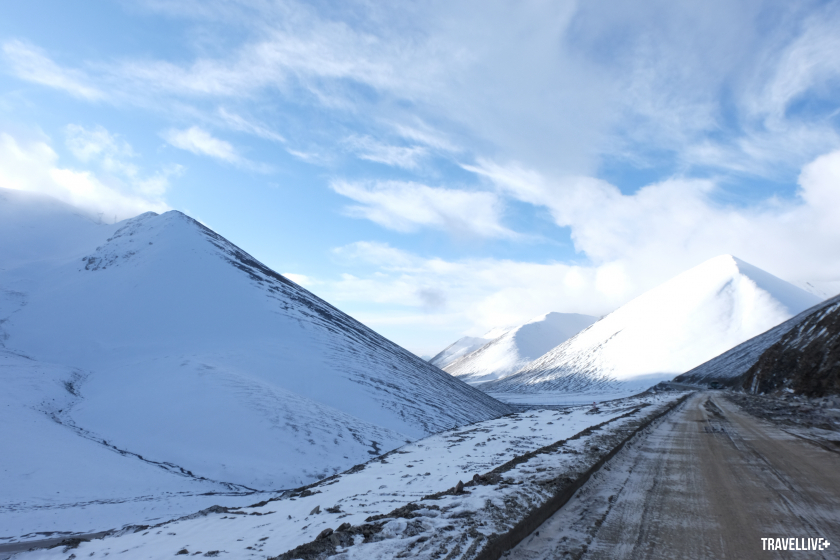
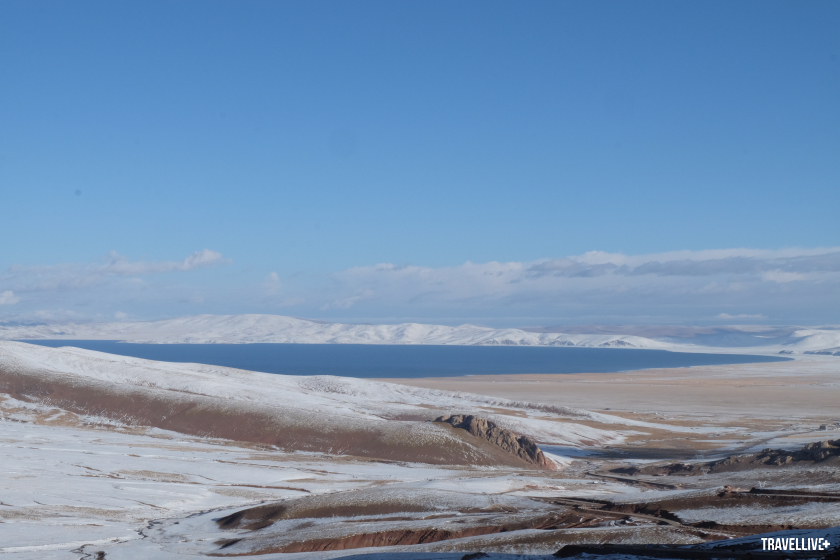
Namtso Lake seen from the top of Lakenla Pass
The car stopped at the top of the pass, I looked down at the blue Namtso Lake below. The outside temperature was about minus 4 degrees Celsius, freezing cold. We couldn’t stay outside for too long so we had to go down the pass as soon as possible. Leaving Lakenla with regret, we traveled another 30 km to reach the sacred lake. Namtso is truly worthy of its name as a sea lake, with a water surface area of up to 1,920 km2.2, surrounded by snow-capped mountains all year round. Only by viewing Namtso can one clearly see how majestic Tibetan nature is.


Leaving Namtso, we returned to Lhasa, preparing to say goodbye to the earthly paradise and return to reality. When planning to go to Tibet in October, I only hoped for good weather, little rain, clear blue sky so that I could have a good look at the majestic Mount Everest - the dream of many people. But I did not expect Tibet to welcome me with such a beautiful autumn color.
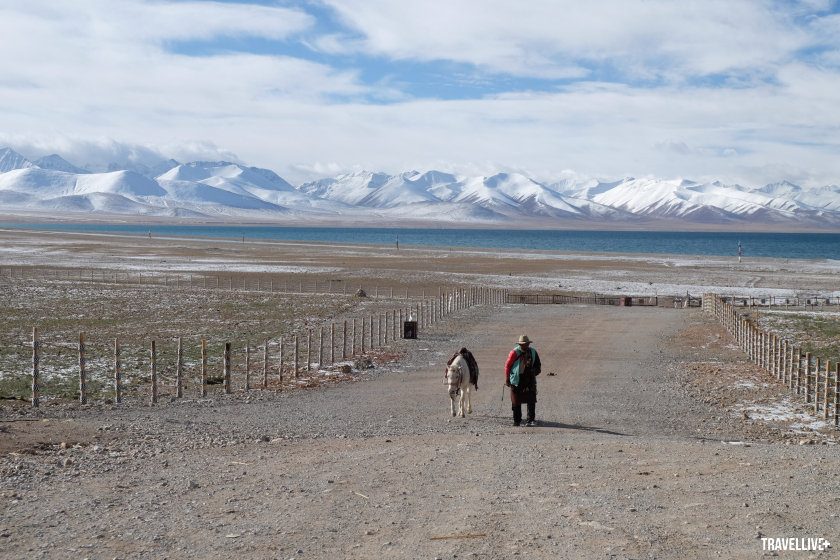
Saying goodbye to Tibet, I remember Yao Min's words in the book "Never Failing Tathagata Never Failing Khanh" written about the 6th Dalai Lama, Shangyang Jiatuo:Every person who has never been to Tibet is convinced that one day they will set foot on this land. Every person who has left Tibet is certain that one day they will return, because they have left a part of their soul there.






